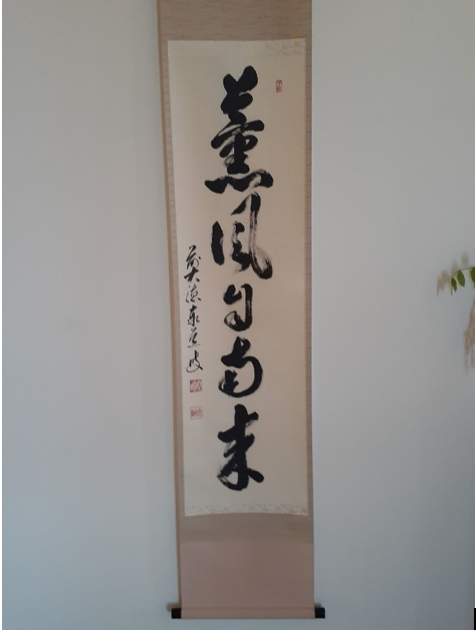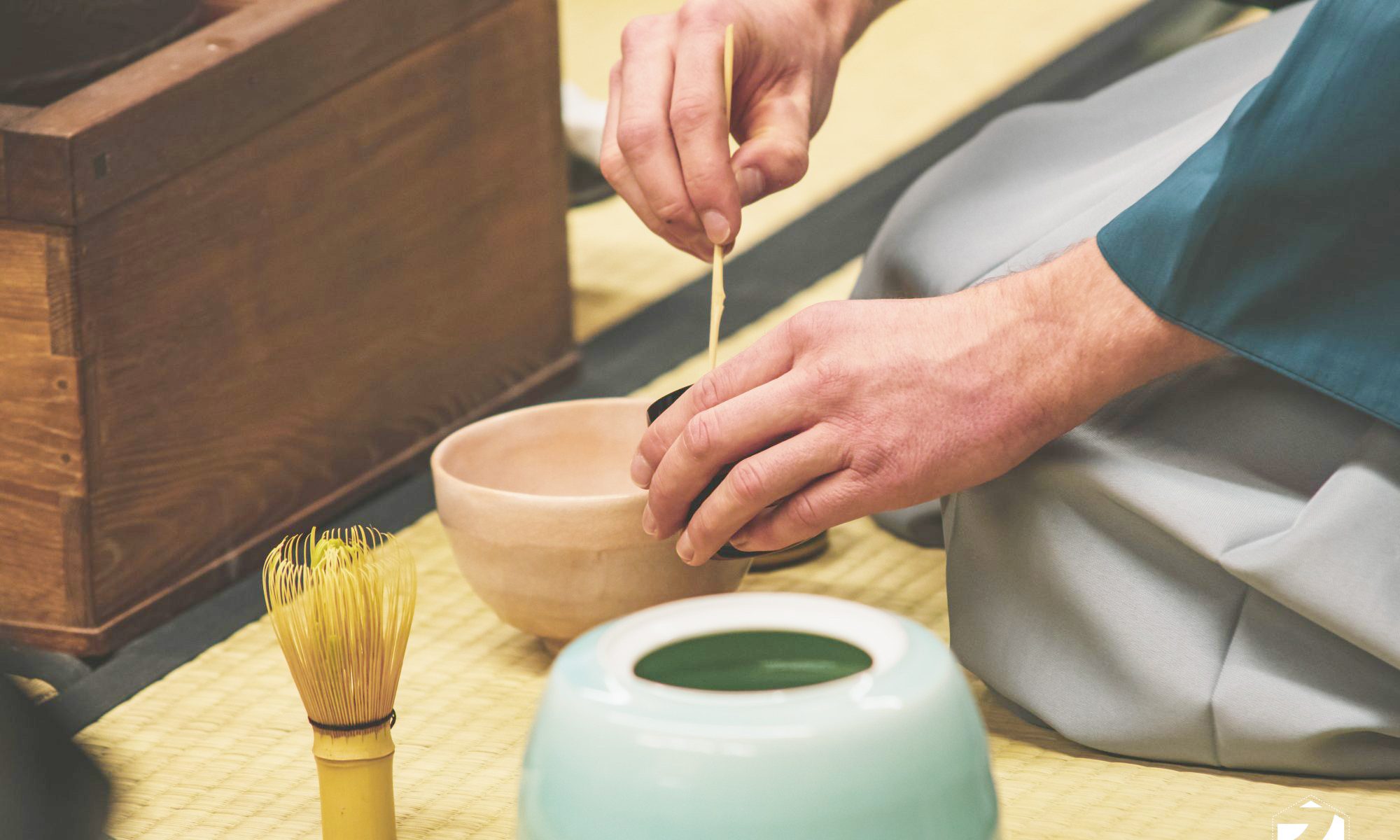The tea ceremony moves with each season. The host considers it when preparing each element of a tea ceremony: the hanging scroll, the flower arrangement, the tea bowls, what to wear (especially if the host is a woman), the incense, and the wagashi (Japanese sweets) to serve before the tea. In Japan, kumpu kaze minami yori kitari (the fragrant wind comes from the south) is a popular scroll in late May (Hounsai Daisosho himself produced a hanging scroll with this short verse).

The verse on this member’s scroll is from a poem by Su Dongpo (東坡,1037 – 1101), a calligrapher, gastronome, painter, pharmacologist, poet, politician, and writer in Song dynasty China. However, the history of the verse goes back much further, to when Emperor Wenzong (809-840) of the Tang dynasty said: “everyone loves the long summer day, even if they suffer from heat stress”. The poet Liu Gongquan (778–865) added a line referring to relief from the cool southern wind.
Two hundred years later, Su Dongo wrote that the verse illustrated a lack compassion for the common people on the emperor’s part, and he re-wrote the verse in the form:
Kumpu minami yori kitari
Denkaku biryo o shozu
The balmy summer breeze comes from the south,
It becomes a bit cooler in the palace.
This is still hard for a tea novice to understand. The full meaning comes from the interpretation that Zen masters put on the verse. Every day we are obsessed with our problems, but if only we only allow these to be blown away by the scents of a refreshing spring breeze then we can taste enlightenment.
Su Dongpo lived in the west of China, in what is now Sichuan province. His verse is clearly about summer. However, in Japan the verse is popular in May and June when on fine days there is often a light breeze from the south, kumpu. In European tradition it is a west wind, or zephyr. In Sydney, the equivalent is a sea breeze in summer.

